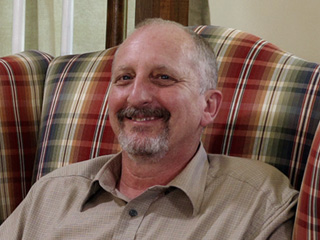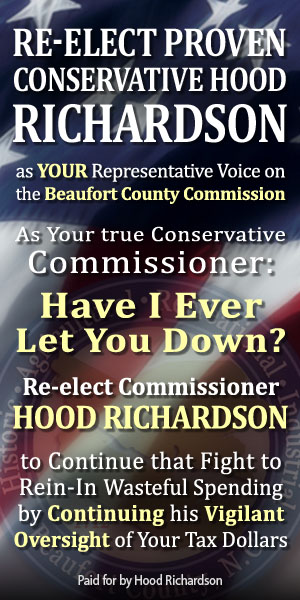Your Basic Needs: Food, Shelter and The TRUTH
An Introduction to Jazz: Part 1
Like any form of artistic expression, jazz music can be appreciated on many different levels. The deeper one explores, the more nuances and subtleties can be discovered. Delving into the evolution of the art brings to light an understanding of its musical and historical perspective. Jazz is both cerebral and visceral for both artist and listener. This symbiosis can be played out in the sterile atmosphere of a recording studio or in a live setting where, at the highest level, the audience and artist are melded together like a good stew; complementary flavors and the love of the cook supersede the technical rules of measured recipes. Great jazz musicians know every musical rule there is and break them on a regular basis. In doing so, they paint a picture in sound that gives the listener the challenge of thinking and feeling at the same time. Jazz differs from other musical genres in both content and intent. Exploring each of these aspects will give you a sense of how much work truly goes into a spontaneous musical expression.
Having attended hundreds of jazz gigs in my lifetime and having purchased even more jazz recordings than my budget would actually allow, I have my own set of preferences in terms of what I enjoy listening to and what I am listening for in any recording or concert. But before I get into that, I'd like to set the stage for you as a pre-introduction to give the music some sort of framework from which you can begin to appreciate it.
The basics of jazz music are pretty easy to decipher. Within any particular song, you will hear melody, harmony, and rhythm. In jazz, the melody is traditionally played or sung by the lead instruments or vocalist. The harmonic structure of the tune is laid out by the pianist and bassist. The rhythmic duties are carried out by the drummer, the bassist and, to a lesser degree, the pianist. I'd like to touch on the harmonic aspect of jazz for just a second here. As you may or may not know, there are 7 tones in a scale (1st and 8th are the same note). In music, harmonies within any song are created by the chord structures, or "skeletons", of each particular scale. The chord is comprised of the 1st, 3rd, 5th, and 7th notes of each scale. The juxtaposition of chords within the framework of a tune is called its progression. So, for our talking purposes, the chord progression in jazz strongly determines the sonic color of any particular tune as much as the melody. By lowering or, on occasion, raising any one of the notes within that chord, you will change and alter the color and mood of any particular tune. The truly beautiful evolution of jazz is in its manipulation of these chords. Each chord can be extended, inverted, or transformed to suit the individual composers needs or desires.
Now, the chord progressions will go in a sequence. This sequence can vary greatly, but for our discussion, we will keep it to the basics of a 16 bar blues progression. This is the most common form in jazz and has been for many decades. The 16 bar progression begins with the opening 4 bars of music; these 4 bars are repeated; the next 4 bars are called a bridge; and the progression is concluded by a repeat of the opening 4 bars. My favorite example of this type of format is Giant Steps by John Coltrane.
Again, it is an evolving art form, so there are many more variations on chord progressions and forms that one could get lost trying to include all of them.
All of this music theory serves as an easel upon which musicians sketch and paint their auditory masterpieces. Jazz groupings come in many shapes and sizes: duo, trio, quartet, quintet, sextet, big band...you get the picture. However, what is more important than the size of the ensemble is the chemistry of the members within it. It is not that different than a sports team concept. If the chemistry is bad, it really doesn't matter what level the talent of the individual. And, like all teams, you are only as good as your weakest member. If a grouping wants to play the above piece, "Giant Steps", in a different key than what is written, it will not work if one of the members doesn't know the proper progressions.
Furthermore, there are several lines of communication that happen within a group while playing a particular piece. The drummer and bassist have to be locked into the proper tempo; that is their main function in jazz and what the rest of the group relies on throughout the piece of music being played. The pianist and the bassist have to be on the same page when it comes to establishing chord structures to support the melody. All this communication serves as a support network to the lead soloist. Now, solos are THE main conversation piece in modern jazz. If you listen to this music often enough, you will come to listen to it in terms of a conversation...or debate...or lecture. Individual solos can be fiery with opinion, or they can be contemplative and introspective in nature. Solos can be proactive in terms if setting the tone for the ensemble, or they can be reactive to what the ensemble sets him or her up to play. In my heart, the best example of this lies in the following clip by McCoy Tyner.
Music theory and its application at the highest levels of musicianship are displayed frequently in the world of jazz. Having listened to this art form for 30 years, I will not hesitate in admitting that it truly is an acquired taste. However, acquiring that taste involves the listener to be actively involved in the listening process. In my next article, I will attempt to lead you further down the road of understanding and appreciating this art of improvisational music.
Go Back
Having attended hundreds of jazz gigs in my lifetime and having purchased even more jazz recordings than my budget would actually allow, I have my own set of preferences in terms of what I enjoy listening to and what I am listening for in any recording or concert. But before I get into that, I'd like to set the stage for you as a pre-introduction to give the music some sort of framework from which you can begin to appreciate it.
The basics of jazz music are pretty easy to decipher. Within any particular song, you will hear melody, harmony, and rhythm. In jazz, the melody is traditionally played or sung by the lead instruments or vocalist. The harmonic structure of the tune is laid out by the pianist and bassist. The rhythmic duties are carried out by the drummer, the bassist and, to a lesser degree, the pianist. I'd like to touch on the harmonic aspect of jazz for just a second here. As you may or may not know, there are 7 tones in a scale (1st and 8th are the same note). In music, harmonies within any song are created by the chord structures, or "skeletons", of each particular scale. The chord is comprised of the 1st, 3rd, 5th, and 7th notes of each scale. The juxtaposition of chords within the framework of a tune is called its progression. So, for our talking purposes, the chord progression in jazz strongly determines the sonic color of any particular tune as much as the melody. By lowering or, on occasion, raising any one of the notes within that chord, you will change and alter the color and mood of any particular tune. The truly beautiful evolution of jazz is in its manipulation of these chords. Each chord can be extended, inverted, or transformed to suit the individual composers needs or desires.
Now, the chord progressions will go in a sequence. This sequence can vary greatly, but for our discussion, we will keep it to the basics of a 16 bar blues progression. This is the most common form in jazz and has been for many decades. The 16 bar progression begins with the opening 4 bars of music; these 4 bars are repeated; the next 4 bars are called a bridge; and the progression is concluded by a repeat of the opening 4 bars. My favorite example of this type of format is Giant Steps by John Coltrane.
Again, it is an evolving art form, so there are many more variations on chord progressions and forms that one could get lost trying to include all of them.
All of this music theory serves as an easel upon which musicians sketch and paint their auditory masterpieces. Jazz groupings come in many shapes and sizes: duo, trio, quartet, quintet, sextet, big band...you get the picture. However, what is more important than the size of the ensemble is the chemistry of the members within it. It is not that different than a sports team concept. If the chemistry is bad, it really doesn't matter what level the talent of the individual. And, like all teams, you are only as good as your weakest member. If a grouping wants to play the above piece, "Giant Steps", in a different key than what is written, it will not work if one of the members doesn't know the proper progressions.
Furthermore, there are several lines of communication that happen within a group while playing a particular piece. The drummer and bassist have to be locked into the proper tempo; that is their main function in jazz and what the rest of the group relies on throughout the piece of music being played. The pianist and the bassist have to be on the same page when it comes to establishing chord structures to support the melody. All this communication serves as a support network to the lead soloist. Now, solos are THE main conversation piece in modern jazz. If you listen to this music often enough, you will come to listen to it in terms of a conversation...or debate...or lecture. Individual solos can be fiery with opinion, or they can be contemplative and introspective in nature. Solos can be proactive in terms if setting the tone for the ensemble, or they can be reactive to what the ensemble sets him or her up to play. In my heart, the best example of this lies in the following clip by McCoy Tyner.
Music theory and its application at the highest levels of musicianship are displayed frequently in the world of jazz. Having listened to this art form for 30 years, I will not hesitate in admitting that it truly is an acquired taste. However, acquiring that taste involves the listener to be actively involved in the listening process. In my next article, I will attempt to lead you further down the road of understanding and appreciating this art of improvisational music.
| High Fiasco for Some, Bop to you Drop for Others ... | Music through the Ages, Music | HIM - "Screamworks: Love in Theory and Practice" |
Latest Music
|
Sony Pictures entertainment has announced that four separate Beatles movies are in the works, one featuring each of the members of the famed British band.
Published: Friday, March 1st, 2024 @ 5:10 pm
By: Daily Wire
|
|
Fans can pay to see an Elvis Presley concert thanks to the growing popularity of AI technology in the concert sphere.
Published: Sunday, February 25th, 2024 @ 10:17 pm
By: Daily Wire
|
|
Shortly after the news of his passing was announced, tributes to country music legend Toby Keith started pouring in.
Published: Friday, February 9th, 2024 @ 11:28 am
By: Daily Wire
|
|
Country superstar Jason Aldean is speaking out after the Left hurled accusations of racism at him due to his anti-violence and pro-America song, “Try That In A Small Town.”
Published: Saturday, December 30th, 2023 @ 3:59 pm
By: Daily Wire
|
|
Dolly Parton celebrated a career milestone at age 77 after her first rock album, titled “Rockstar,” reached No. 1 on six different Billboard charts and saw the highest debut sales out of her entire discography.
Published: Wednesday, December 13th, 2023 @ 8:03 am
By: Daily Wire
|
|
“Lord of the Rings” filmmaker Peter Jackson said he believes it’s possible to create more Beatles music in the future with the use of AI (artificial intelligence) technology.
Published: Tuesday, November 21st, 2023 @ 1:34 pm
By: Daily Wire
|
|
Dave Chappelle attempted to address a controversy he created last week when some fans got up and left one of his shows over remarks that he made about Israel after more than 1,400 people were murdered there earlier this month.
Published: Saturday, November 11th, 2023 @ 6:20 pm
By: Daily Wire
|
|
Decades after shelving music written and sung by John Lennon, the remaining members of The Beatles announced on Thursday they have a release date for “Now and Then” — a song that one of the most influential bands of all time says will be their last.
Published: Saturday, November 11th, 2023 @ 2:43 pm
By: Daily Wire
|
|
One of the great young pianists of the world opened his concert at New York’s Carnegie Hall with a performance of “HaTikvah” (The Hope), Israel’s national anthem.
Published: Tuesday, November 7th, 2023 @ 3:47 pm
By: Daily Wire
|
|
U2 took time out of their Las Vegas concert to pay tribute to the Israelis murdered by Hamas terrorists at a music festival over the weekend, changing several lyrics in their hit song “Pride (In The Name Of Love)” to honor them.
Published: Tuesday, October 17th, 2023 @ 6:19 pm
By: Daily Wire
|
|
Legendary singer Jimmy Buffett passed away Friday, September 1. He was 76.
Published: Tuesday, September 26th, 2023 @ 11:11 pm
By: Daily Wire
|
|
Rock legend Alice Cooper lost a brand partnership with a cosmetics company after he slammed the transgender movement in an interview late this week.
Published: Wednesday, September 20th, 2023 @ 2:14 pm
By: Daily Wire
|
|
Not even Mainers want to be California — at least that’s the takeaway after Pine Tree State residents slammed a proposed statewide crackdown on fossil fuels this week.
Published: Thursday, September 14th, 2023 @ 7:42 am
By: Daily Wire
|

























